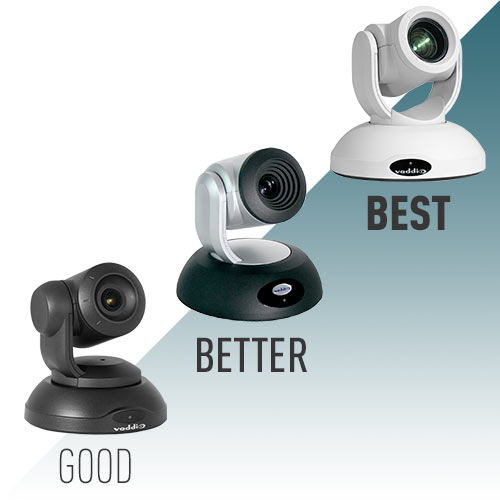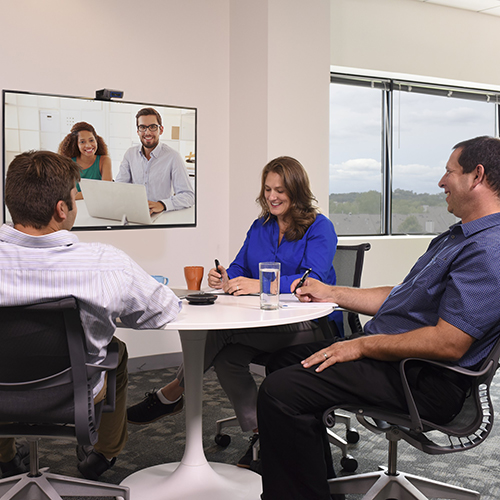Posted on 10/31/2018 by Chief Team
If you’re like me, you spend a lot of time at your desk. It pays to take time ensuring your set up will help you avoid repetitive stress and other common workplace injuries. After my first year here, my hands were twitching even when not at my desk. A simple wrist rest for typing and mousing did wonders, but what would have been better is to set myself up right in the first place.
But what about the piles of old papers and trade show swag cluttering my keyboard space? I’ll get to those another day. For now, let’s talk office ergonomics.
Modern workspaces are constantly changing, requiring furniture solutions that keep up with the times and keep workers as healthy as possible, especially with workplace health and wellness more front-of-mind than ever!
User comfort and well-being are important considerations with any desktop set up. The enhanced ergonomic benefits of advanced monitor mounts help workers avoid injury and allow for flexible monitor configurations to meet the differing needs of various users.
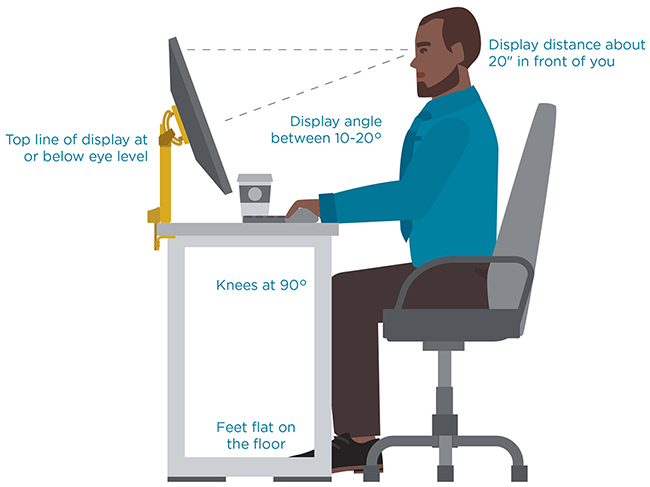
Many office ergonomic benefits center on monitor arm flexibility and ease of use.
The Human Factors and Ergonomics Society notes the following requirements when considering the monitor support surface and viewing angle:
- Allow users to adjust the tilt and rotation angle of the monitor
- Allow users to adjust line-of-sight distance to the monitor
- Locate the screen’s center 15 to 25 degrees below horizontal eye level
Monitor arms provide superior flexibility for monitor tilt and distance adjustment over standard desk stands. Monitor arms also enable customization per user needs for ease of movement or maximum adjustment. This flexibility is extremely helpful for a variety of user populations, including:
- Multi-user requirements of hoteling, hot-desking and free address office environments
- Individual work injury and ergonomic needs
- An aging workforce
- Bifocal and progressive lens wearers
With office densification driving smaller personal work surfaces with dramatically shallow-depth desktops, Chief is responding with the new Kontour KX Series Monitor Arms to provide the most complete range of motion available. The mounts use Chief’s new and exclusive FleXlink design to enable positioning of the monitor as far back from the user as possible for proper ergonomic viewing distance – something many dual-monitor arms fail to achieve when backed up against a wall or furniture panel. The KX Series also provides full range of motion for optimal positioning and screen sharing with colleagues. Available in column and desk configurations.
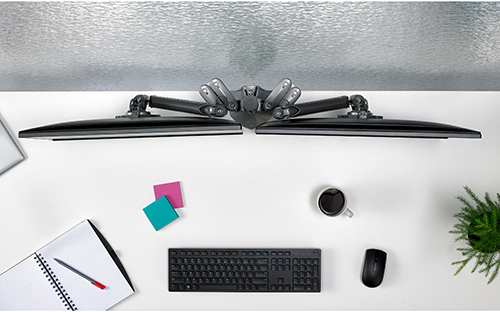
KX mounts achieve shallow depths while keeping monitors close together.
When it comes to flexibility, monitor arms provide users with a wide range of tilt and swivel options for the side-to-side, front/back and up/down movement that today’s workforce requires. For instance, Chief’s Kontour K1 and KX Series monitor arms with our patented Centris Extreme Tilt monitor heads allow bifocal and progressive lens wearers to tilt the monitor back dramatically and lower the monitor all the way down to the work surface. This means no more leaning back and tilting the head up or looking down to read the screen. You should also be able to optimize ergonomics for touchscreen displays, and the angle of the monitor to eliminate any glare from lights or sun.
In addition, dynamic articulating arms allow for quick, fingertip height adjustments up to 13 inches, which creates an ideal situation for sit/stand or multi-user environments. Some mounts provide up to 23 inches of height adjustment, so you can even stand while at your fixed-height desk.
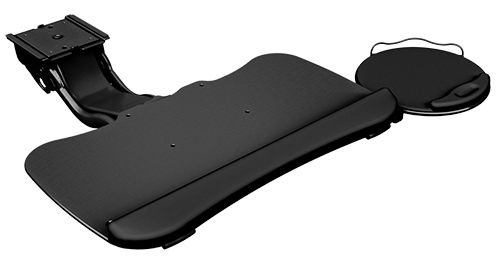
Keyboard trays help keep your arms in the proper position.
To bring the keyboard and mouse with you when you stand, or to place the keyboard at an optimal ergonomic position while seated, Chief offers a new series of keyboard & mouse support systems to meet most ergonomic preferences across a range of user applications. They optimize tilt angle of the keyboard away from the user for a more natural and ergonomic typing position, and some solutions also provide independent positioning of the mousing surface.
To learn more about desktop monitor solutions and office productivity, check out our whitepaper, and see the Workspace Solutions page for more information.

 All News
All News